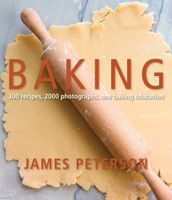Advertisement
Basic Doughs
Published 2009
Pastry chefs working in the French tradition divide pastry into three different types: Pâte brisée (pronounced breezay), which I also call “basic pie and tart pastry dough;” Pâte sucrée (pronounced sue-kray), which I call “sweet crisp pastry dough;” and Pâte sablée, which I call “extra buttery sweet pastry dough.”
Most pie pastry dough, such as basic pie and tart pastry dough and extra buttery sweet pastry dough, is made by combining butter and flour; adding liquid such as egg, water, or cream; and then mixing just enough for the pastry dough to come together into a somewhat ragged-looking mass. The pastry dough is then smeared with the heel of the hand or gently kneaded just long enough to incorporate the butter and make the pastry dough possible to roll. Extra buttery sweet pastry dough contains sugar. Basic pie and tart pastry dough contains sugar only some of the time; when it does, it is called Pâte brisée sucrée. I call it “sweetened basic pie and tart pastry dough.”

